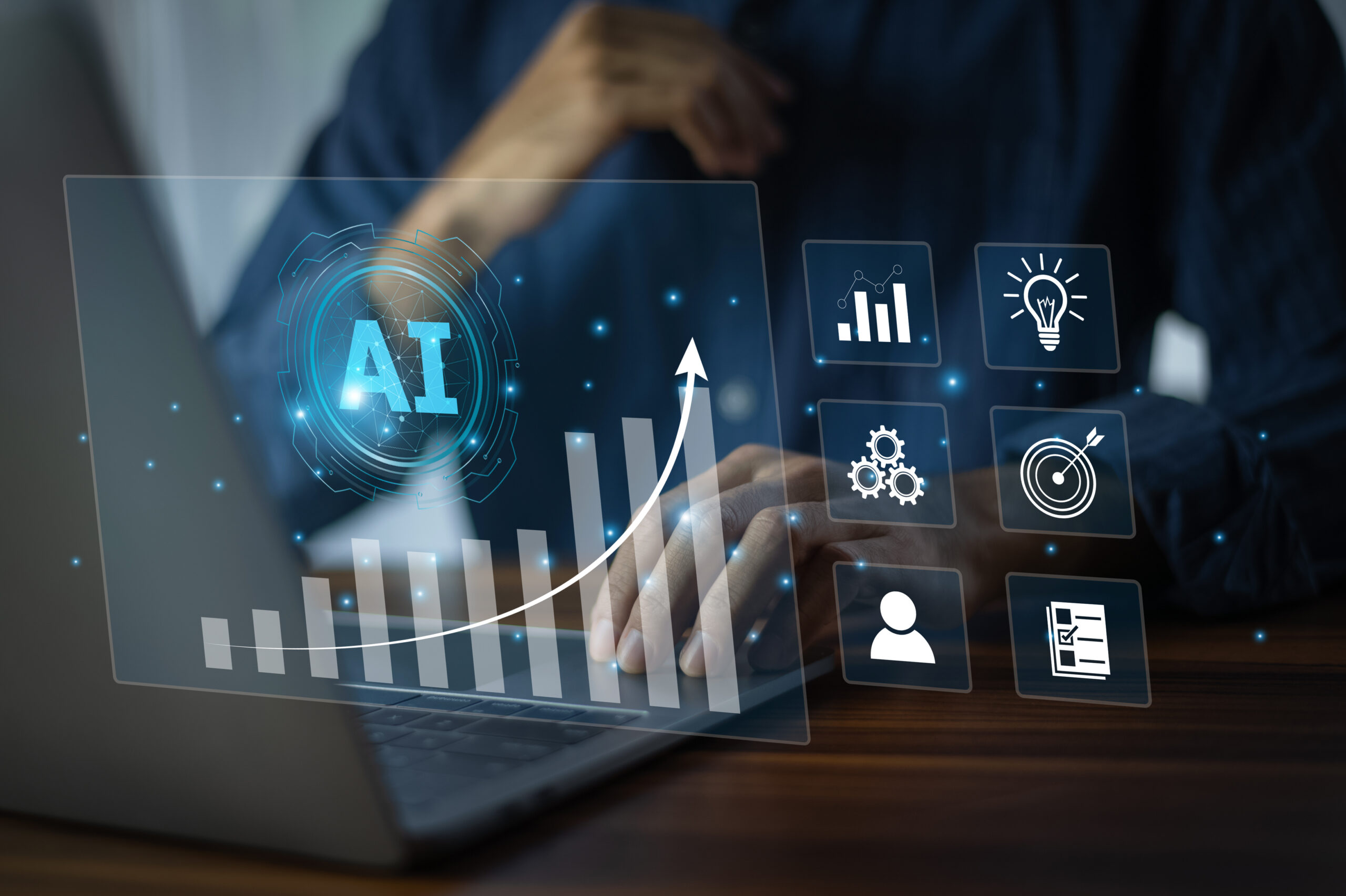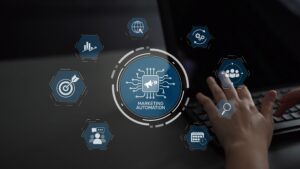What are the most impactful AI trends reshaping industries today? How can business leaders adapt their strategies to keep pace with emerging AI trends? What role does ethical design play in successfully adopting AI trends across sectors?
Artificial intelligence is no longer a concept confined to R&D labs—it’s actively transforming industries from finance and healthcare to education and public services. In this post on emerging AI trends, we explore how AI has shifted from a novelty to a core strategic asset, dramatically changing how organizations innovate, compete, and serve their stakeholders. The piece emphasizes the importance of approaching AI not just as a tool, but as a foundational pillar of enterprise strategy, affecting everything from boardroom decision-making to customer personalization and operational agility.
The blog also offers a comprehensive, sector-by-sector analysis of where AI trends are having the most visible impact, followed by an exploration of the future with Generative AI, Multimodal AI, and Agentic AI. With ethical deployment, transparency, and human-centered design at the forefront, the post invites readers—regardless of their technical background—to step confidently into the conversation and become informed stewards of this transformative technology.
Gone are the days of AI seeming like a far-off, futuristic concept. It’s become an operational reality embedded across nearly every industry, from finance to retail. From the algorithms behind personalized playlists on Spotify to predictive models that optimize healthcare processes, AI is changing how businesses operate, leaders make decisions, and consumers experience the world around them.
This evolution seems to have come on fast, and with all the rapid advancements, it’s easy for professionals and the public alike to feel overwhelmed. Amid the buzzwords and fast-moving developments, the central question is: how do we make sense of these transformations and ensure they work for all of us?
As someone who bridges behavioral science, enterprise strategy, and advanced analytics into my daily work, my mission is to make AI and data science accessible, understandable, and actionable, whether you have a tech degree or not. Across multiple industries, AI is more than just a tool; it’s a strategy, and it’s reshaping how organizations compete, innovate, and serve their stakeholders to the absolute best of their ability.
Whether you’re a data scientist or not, familiarizing yourself with emerging AI trends is becoming essential, particularly as this tech finds its way into nearly every aspect of our lives, from personal to-dos to daily work tasks.
Table of Contents:
AI as a Strategy, Not Just a Tool
Sector-by-Sector Exploration of AI’s Current Impact
- Finance: Precision, Prediction & Inclusion
- Healthcare: Amplifying, Not Replacing, Human Intelligence
- Retail & E-Commerce: AI-Powered Personalization
- Manufacturing & Logistics: Intelligent Automation
- Education: Personalization at Scale
- Public Sector & Smart Cities: Improving Civic Life
Emerging Trends Shaping AI’s Future Trajectory
AI as a Strategy, Not Just a Tool
One of the biggest questions and concerns people have as AI continues advancing and permeating all aspects of life is: How do we make these advancements meaningful and equitable?
It starts by seeing AI as more of a strategy, not just a tool.
Early adopters of AI trends treated the tech as more of a fun add-on feature. Today, the competitive landscape tells a different story: businesses and organizations that weave AI into their core strategy outperform those that just sprinkle it on top. According to data from PwC’s 28th Annual Global CEO Survey earlier this year, 32% of global CEOs say implementing GenAI into their operations has increased their revenue.
Whether it’s a bank predicting customer needs or a hospital triaging patients more effectively, AI is now a boardroom agenda item. Leadership teams are closely watching AI trends, looking out for the best models to integrate while simultaneously keeping their teams ready for new tech by prioritizing AI and data literacy programming. This ensures these new tools are equitable and accessible and that employees are comfortable and ready to use them effectively when the time comes. This strategy element goes far beyond just using AI as a support tool.
Sector-by-Sector Exploration of AI’s Current Impact
Data shows that 3 in 5 businesses are adopting AI and machine learning in some capacity, and this isn’t specific to one industry. AI integration is commonplace across the board, no matter what scope of business you’re in. Let’s break down some of the key areas where AI is already making a substantial impact:
- Finance
- Healthcare
- Retail & E-Commerce
- Manufacturing & Logistics
- Education
- Public Sector & Smart Cities
1. Finance: Precision, Prediction & Inclusion
In finance, AI trends have revolutionized the industry by enabling predictive precision at scale. Financial institutions were among the earliest adopters of AI due to the volume and complexity of the data they handle on a regular basis. Machine learning models now flag suspicious transactions in real-time, helping detect fraud before it escalates.
Algorithmic trading systems identify patterns and execute trades at speeds humans couldn’t dream of matching. Credit risk models have evolved beyond traditional metrics to include alternative data sources, expanding financial inclusion. These advances still rely on human-in-the-loop oversight, though. Data scientists flag anomalies that algorithms might misclassify or miss entirely to ensure everything is as precise and reliable as possible for clients.
At J.P. Morgan Chase, where I lead Marketing Data and Analytics, we use AI not just for operational efficiency but also to augment human decision-making. We integrate psychological insight with data science to create intuitive and customer-centered solutions, ensuring this tech works for us and our clients.
2. Healthcare: Amplifying, Not Replacing, Human Intelligence
Healthcare is another area undergoing a quiet revolution thanks to AI trends. Diagnostic tools powered by machine learning detect illnesses earlier and more accurately. Predictive models help hospitals reduce readmissions by identifying at-risk patients, and virtual assistants powered by natural language processing (NLP) assist patients in managing their care in real-time.
AI isn’t being implemented to replace doctors, though. It’s here to amplify their impact and reduce burnout. That’s how we ensure we’re not only taking care of our essential healthcare workers but also that patients can consistently receive high-quality care when they need it most. When designed responsibly, these systems can dramatically improve patient outcomes and open doors to a level of personalized, fast, high-quality care we never had before.
AI is also being used in the mental health space, as AI chatbots provide 24/7 mental health support, helping to reduce stigma and expand access to care.
3. Retail & E-Commerce: AI-Powered Personalization
Retail and e-commerce platforms are already leveraging AI trends to create highly personalized customer experiences. AI fine-tunes recommendation engines, like those used by Netflix, Amazon, Walmart, and other retailers, to anticipate customer preferences based on behavior. Dynamic pricing tools automatically adjust prices based on real-time demand and competition. Customer service chatbots easily handle increasingly complex interactions, ensuring consumers can seamlessly move through the customer journey whenever it’s most convenient for them, as these bots offer 24/7 support.
Today’s consumers crave highly personalized experiences. These innovations in retail and e-commerce don’t just drive sales; they create meaningful interactions that build loyalty and trust over time.
4. Manufacturing & Logistics: Intelligent Automation
In manufacturing and logistics, we see AI’s impact on predictive maintenance, robotics, and smart supply chains, making the development process smoother and more efficient from start to finish.
One of the biggest draws of this technology is that during global disruptions—whether pandemics, climate-driven events, or other obstacles—AI-driven logistics reroute shipments dynamically, keeping essential goods flowing when traditional planning would fail. AI tools and technologies keep operations moving, stepping in when humans can’t, no matter what happens.
AI systems also monitor factory equipment and anticipate malfunctions before they occur, reducing downtime and costs. Robotics enhances precision in assembly lines while still relying on human oversight, and supply chains are becoming more adaptive, using real-time data to forecast demand and optimize distribution. These capabilities represent the rise of Industry 4.0—a connected, intelligent system that streamlines production while remaining agile.
5. Education: Personalization at Scale
Imagine being able to personalize your education, tailoring your experience based on your learning style and preferences. Digital tutors can adjust lesson difficulty in real-time, ensuring students stay challenged but not discouraged. Automated grading tools free educators from repetitive tasks, giving them bandwidth for mentoring and pursuing more creative, engaging lessons. AI-driven learning analytics also spot disengagement early, enabling interventions that prevent dropout.
For underserved communities, low-cost AI chatbots deliver language instruction, STEM tutoring, and even career counseling—bridging geographic and economic gaps that once felt insurmountable, so everyone can access education and knowledge-building resources.
6. Public Sector & Smart Cities: Improving Civic Life
Some municipalities are deploying AI chatbots to streamline license renewals, freeing civil workers up to focus on more complex cases or innovative developments they don’t have time for otherwise.
Some cities also use traffic-optimization algorithms to help shorten commute times and lower emissions by adjusting signal timing dynamically. Environmental sensors combined with machine learning predict air-quality dips, informing health advisories before residents feel the smog. AI trends in the public sector are all about improving daily life for residents and helping build smarter, more efficient cities.
Emerging Trends Shaping AI’s Future Trajectory
AI technology has already advanced significantly over the past few years—the past few months, even—but it’s not slowing down any time soon. There are new, more advanced iterations of these algorithms on the horizon as AI trends continue evolving to new heights.
- Generative AI
- Multimodal AI
- Agentic AI
1. Generative AI
Generative AI, or GenAI, is an advanced subfield of AI that uses generative models to create or generate text, images, videos, and other data. This tech is ushering in a “co-creation” era where designers become creative directors who prompt, refine, and curate machine outputs, freeing themselves to focus on other tasks.
While these algorithms are insightful and helpful, at the same time, legal systems around the world are racing to answer foundational questions: Who owns AI-generated art? How do we compensate the humans whose data trained these models?
Copyright offices, courts, and standards bodies often draft new precedents, and forward-thinking organizations are embedding usage rights, provenance tracking, and revenue-sharing clauses directly into their creative supply chains to protect their work. Stakeholders who address these questions proactively will define fair standards and likely capture long-term market loyalty from consumers who increasingly demand ethical transparency.
2. Multimodal AI
Multimodal AI is a machine learning model that can process, understand, and integrate information from multiple modalities or types of data.
In healthcare, next-generation multimodal systems can interpret radiology images, mine clinical notes for context, and simultaneously analyze a patient’s spoken symptoms.
In education, accessibility devices powered by these same algorithms convert classroom slides into real-time descriptive audio, dramatically enhancing inclusion for visually impaired students.
Some brands have also embraced multimodal AI to create immersive shopping experiences. A customer can upload a photo of their living room, describe their preferred aesthetic, and instantly receive a 3D layout populated with furniture and décor that fits their preferred style.
3. Agentic AI
Unlike passive analytical tools, agentic AI systems set their own goals, execute multistep tasks, and learn from feedback loops—whether they are booking complex business travel, reconciling a month’s worth of corporate expenses, or managing an entire queue of customer-service inquiries end-to-end. These are autonomous AI systems, acting as assistants to help you navigate life’s mounting to-do list.
This autonomy introduces incredible efficiency but also raises complex questions about accountability: When an AI agent approves a refund in error or books a flight to the wrong city, who is responsible for fixing the mistake?
Robust governance frameworks are emerging to meet these challenges. Clear permissions and role-based checkpoints trace every decision back to its original prompt, data source, and model version. These agents also maintain a clearly labeled “human override” switch to ensure humans preserve some sense of control, not becoming bystanders in critical decision processes.
Conclusion
AI’s march across industries is unstoppable, but we’re not merely left to exist at this technology’s expense. We have a choice: We can either remain passive users or become active architects, guiding technology toward inclusive, sustainable futures.
Becoming an active digital steward starts by demystifying AI trends, embedding ethics into every deployment, cultivating a willingness to adapt and learn, and investing in human skills that machines can’t replicate: empathy, creativity, and judgment, just to name a few. When we combine the precision of algorithms with the wisdom and emotion of diverse human perspectives, we unlock solutions to challenges once deemed insurmountable.
The invitation is open, and the choice is yours. Now is the time to enter the AI conversation with curiosity and confidence. Whether you’re a developer, a data scientist, a designer, an executive decision-maker, or an everyday person looking to expand your knowledge of this wide-reaching tech, your voice matters in shaping a world where technology amplifies our best human qualities rather than replacing them.









One Response
Nearly all of what you state is astonishingly accurate and that makes me ponder the reason why I hadn’t looked at this in this light previously. Your piece truly did switch the light on for me as far as this specific subject matter goes. But at this time there is one factor I am not really too cozy with so while I try to reconcile that with the central idea of the point, let me observe just what all the rest of the readers have to say.Nicely done.